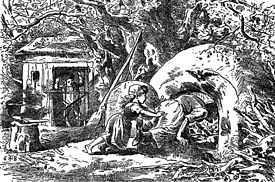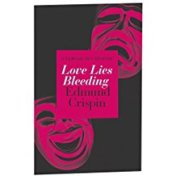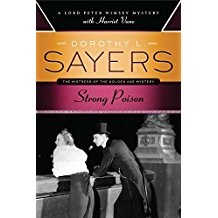Consider yourself caught up
Time to bring you up-to-date on everything that’s kept me away from here since April 23.
Turns out that leaving Arizona a few weeks early this spring was a good idea. Within two weeks of our return, my ninety-year old mother was in the hospital with a compression fracture and three weeks later she died. With lots of help from family, we cleaned out her apartment in two days then sold the things we couldn’t keep (along with lots of my things–another good idea) at several yard sales. Her graveside service followed a few weeks later; the extra time allowed us to plan a very special service to honor her memory.
My husband and I have always said that once my mother passed, we would sell our house and move. Somewhere. That moment suddenly was upon us. We worked like crazy getting our house ready to put on the market, had lots of showings, and less than two weeks later we were under contract. That was pretty much the extent of our summer.

Grand Teton National Park
Except for the fantastic trip to Utah, Jackson Hole, WY, the Grand Teton and Yellowstone National Parks that we took with our Arizona crew in the middle of July, that is! We were fortunate to take our nine-year old grandson from NH with us, for a total of twelve. He loved his cousin time and the bears, bison, elk, Old Faithful, white water rafting, horseback riding, and pool time.

Yellowstone National Park
Amidst all of that, we worked feverishly on plans for a small apartment over the garage of my daughter and family in a town about twenty miles north of us. When the contractor calmly suggested cutting the roof off the garage to put in a shed dormer, we knew it was time to regroup. My daughter suggested we look down instead of up. Her finished, wide-open, walk-out basement makes much more sense–it’s larger than the first house we built back in 1975 and will cost twice as much to make it into an apartment.
We are now at a point that I never thought I would be at again: picking out kitchen cabinets, flooring, appliances, bathroom fixtures, paint colors, new furniture. I’ve managed to push as many of the decisions as possible onto my daughter. It is her house.
Our closing date for the end of October fast approaches. We have categorized our remaining furnishings as keep, sell, or give away. My husband says get rid of everything and start fresh. He may get his wish. After this weekend’s yard sale (the fourth of the summer!), we may be left with just the essentials: our bed, couch, television, coffee table, and coffee maker.
Starting fresh is my new approach on Gabby, one of my Woodbury trilogies. Though I’m not scrapping everything I’ve written, I have made some major changes. I’ve moved the beginning of the book back a few scenes, setting the murder a few chapters into the book. Gabby has a new background and family. If I can pull it off, the third act will include different points of view. Borrowing a memorable line from one of my favorite movies, we think you got a lot of potential, Gabriella.
THE SINGULAR ‘THEY,’ ‘THEIR,’ and ‘THEMSELVES.’
The singular ‘they’ is commonly used to refer to a person whose gender is irrelevant or unknown—for example, “The participant indicated their preferences.”
Or, “If your child is thinking about a gap year, they can get good advice from this website.”
And, “A researcher has to be completely Uobjective in their findings.”
Why am I bringing up this topic? Because I’m reading Jasper Fforde, that’s why. He is a never-ending fount of perplexing and intoxicating forms of writing.
I’m reading ‘Early Riser.’ It has just been reviewed by all sorts of people who do that for a living, and wouldn’t that be a wonderful job? So, I’m going to give only a little background and not review it. I want to bring up the fact that I’m two-thirds of the way through Fforde’s phantasmagorical winter ( a winter that has as much, or more, import as the protagonist), and I’m still not sure of the sex (I said sex, not gender) of the protagonist, Charlie Worthing. Charlie is a novice Winter Consul whose job is to protect the hibernators, the vast majority of the population, and make sure various off-the-grid groups do not steal from the Pantry during the winter months. Consul’s various weapons include Bambis and Thumpers, technically non-lethal unless used at close range. They, the consuls, Charlie included, are all damaged in some way, but in the winter landscape of Sector Twelve, they are accepted for what they are.
Fforde never ever uses a gender descriptive pronoun for Charlie. I said gender this time, not sex and that’s maybe because I am getting a little confused. Fforde’s not confused. He’s doing this on purpose to confuse me. I believe I found a clue to Charlie’s, uh, disposition on page 87 but subsequently, while reading various reviews, I see that the reviewers either didn’t pick up on that clue, and you know they skim, or ignored it and proceeded to give Charlie a nomenclature.
Were they correct in their willy-nilly choice of Charlie’s state since the author, as of two-thirds of the way through the book, chose NOT to disclose it? And, why is Jasper Fforde doing this? Well, that’s a silly question. Why does he do anything no one else has thought of doing?
So, I keep reading.
The severe winters that are afflicting Wales, and all the surrounding environs as far as we know, are another of the author’s little digs that I find amusing considering we’re all going to melt, apparently, from heat in a dozen years or so.
Do, someone else, read the book and let me know what you think.
A Good Book
(Eleanor here. Heidi’s posting for me again, because the dog ate my computer.)
***
“A good book makes you want to live in the story. A great book gives you no choice.”
I don’t know who said that. Heidi sent it to me this week with a bunch of other quotes that had to do with writing and gorgeous pictures of libraries that you would give your eye teeth to live in, at night, when everyone has gone home and left you ALL ALONE with great books that suck you into them. Of course my eye teeth are nothing to write home about, as my dentist would say, but that’s not quite the point. You get the point.
We’ve read good books, and we’ve read great books. That’s the reason we keep reading. The great ones you cannot put down. The good ones you put down to eat, sleep and other things, but you are niggled in the back of your mind every minute you are away that you have to get back to see what’s happening. I would like to write a good book, but I would love to write a great one. I have favorite authors who write good books and the occasional great one. What a glorious day it is when you can get your hands on one of those.
So, today was almost an ‘O frabjous day.’* Almost, because I don’t actually have my hands on the book yet, but I found out about it and my library’s trusty librarian has ordered it for me.
The author is Jasper Fforde, and it’s been far too long since I’ve read one of his books. This one is a standalone, not part of his Thursday Next series which I love. The title is ‘Early Riser’.
“Author Jasper Fforde is best known for his parallel universe books starring Thursday Next. But now he’s written a new standalone novel, set in another alternate world.
In Early Riser, the entire human population hibernates for four months every year… well, almost the entire population. Charlie Worthing is one of the Winter Consuls, the misfits tasked with ensuring the safe passage of the sleeping masses. When there’s an outbreak of viral dreams, he investigates. It gets serious when the dreams start to kill people. Then Charlie starts getting the dreams too – and they start to come true…”
I don’t think I’ll have it for next week’s Nor’Easter, but I’ll have it soon and then I’ll pretend that there’s a Nor’Easter outside and I’ll have to be inside for the duration. Or else.
What books are you waiting to get your hands on?
*frabjous(Adjective)
A nonce word in Lewis Carroll’s Jabberwocky meaning “fabulous and joyous”.
O frabjous day! Callooh! Callay!
- frabjous(Adjective)
Great, wonderful, fabulous.
Origin: Originally a nonce word in Lewis Carroll’s Jabberwocky;
Renewal
I don’t think I’ve been living under a rock as far as reading suspense novels goes, yet somehow I’ve missed the books of Clare Mackintosh, my newest favorite author. In the past few weeks I’ve read “I Let You Go,” “I See You,” and “Let It Lie.” I’m still amazed at how many times in “I Let You Go” I was wrong. Wrong about which POV character I was reading, wrong about who did it, wrong about motive. Wrong in an absolutely great way.
In the process of looking for an interview I recently read with Clare Mackintosh and another writer, whose name unfortunately escapes me, I found an interview with Mackintosh and Ruth Ware, an English writer I’d never heard of. Now I’m reading Ware’s “The Death of Mrs. Westaway” and I’ve added “The Woman in Cabin Ten” to my list.
In the interview, Mackintosh states that she’s a detailed plotter. Yet she works out what the story is as she writes the first draft then discards 70% of it and basically starts over from scratch. Sounds somewhat organic to me. Ware plots a bit in her head and then writes the story in the order that the reader will read it, from beginning to end. Definitely organic.
I won’t regurgitate the entire interview–you should watch it.
I’m also reading Steven James’ “Story Trumps Structure.” He’s an organic writer, aka a pantser, and his advice about writing that way is inspiring. I’m underlining and starring information I want to come back to, which is approximately the entire book. 
Before starting James’ book, I thought I had made a momentous decision. After rereading my most recent writings for “Anne,” I decided that all it had been was a very long, drawn out writing exercise. It was too much of a romance gone bad story with a murder thrown in to resuscitate. However, James has inspired me with some ideas on how I can make the novel work by keeping some of my old themes and just trashing everything else.
One area that I struggle with is how much information to reveal to the reader and when to reveal it. James says: suspense requires that we reveal, not conceal, information. I’m going to take that approach with this current “Anne” rewrite and see where it leads me.
Now I’m bursting with ideas and constantly turning to my phone or yellow pad or laptop to make notes about “Anne.” I’ve even produced a satisfactory opening paragraph. That alone is a major accomplishment!
Is all of this renewed energy and enthusiasm the influence of the wise words of Steven James? Or is it the mind-blowing twists of Clare Mackintosh? Probably.
Margaret Atwood Teaches Me to Write
After a month of life chaos, I just opened the best Christmas present ever. I was finally able to start an online master class in writing taught by Margaret Atwood. Atwood is one of the very few authors whose books I do not keep on my fiction bookshelves in alphabetical order. She lives on the special shelves where I keep the books I would like to be buried with.
Each lesson is a video of Atwood, introduced by screen shots of what I take to be her working journals. They don’t show text. Primitive doodles express her wonderfully strange mind. The bottom half of a large bird dangles a small child from its talons. A woman, shaped like a Moomin without the nose, hugs an armless man. Three figures are shown from the waist down: left: a skirt with stick legs; right, trousered legs; center, a naked female. A scrap of writing reads, “the day her mother said to her – etc.”
Atwood lectures from her own working space. “Space” may be the wrong word. There is hardly an open inch. Bookshelves line the walls, of course, with bags and boxes of books piled in front of them. The desk is a rolltop with full pigeonholes and clutter all over its surface, including several journals. The walls are solid with pictures. Best of all, every flat space is covered with objects. There are dolls, some of which seem to cry out for a voodoo hat pin. A large silver crab is in mid-scuttle across a table. The lamp is skirted in long crystal beads. Little boxes, toys, sculpture abound.
Atwood grew up deep in the Canadian wilderness in a cabin without electricity or running water, but with plenty of books. She saw town only in the winter when the family retreated there to wait for spring. “Other children might be afraid of being lost in the woods,” she says. “I was afraid of flush toilets. What was going on there? Why did things just – vanish?”
In high school, she set up a business doing puppet shows at birthday parties for five-year-olds. The plots were taken from fairy tales: The Three Little Pigs, Little Red Riding Hood, Hansel and Gretel.  Atwood’s take on her business success: the stories were “about those things that are dear to the hearts of five-year-olds, namely, cannibalism.”
Atwood’s take on her business success: the stories were “about those things that are dear to the hearts of five-year-olds, namely, cannibalism.”
Atwood’s method is to write by hand, then transcribe while she continues writing. She calls herself a “downhill skier,” trying to write quickly and then go back and “re-vision.” She complains that literature classes imply “a container, the work of art, and inside it are these ‘ideas,’ like prizes in a Cracker Jack box.” This is not, she says, how writers write. Some of her books have begun not even from an imagined character or scene, but simply from an object.
I’ve viewed only three of the 23 lessons so far, but I knew Atwood and I were on the same page when she advised reading all the myths, folktales and fairy tales you can lay hands on – then subvert them all. She cites the Disney movie Maleficent, where Sleeping Beauty’s prince proves a “dud,” and the villain is redeemed, and Samuel Beckett’s Happy Days, where Chekov’s gun meets existential frustration.
The course workbook is chock full of exercises, web sites and sources of writing prompts. I’ve barely started on them, but the exercise that Atwood explains in the first video is worth the price of admission. If you are having trouble getting started, she says, you are afraid of something. Pick up a pen and write down your fears. Her examples of possible fears and their solutions:
You’re afraid your work will be lousy? The wastepaper basket is your friend. Write till it’s better.
You’re afraid your mother will find out? That’s what pen names are for.
You’re afraid people will laugh at you? You don’t have to show anyone anything until you want to.
To fight one’s fears, Atwood suggests coming up with an imaginary mentor, 100% on your side, to stand by you with help and encouragement. A writer you admire, perhaps. Who would you like for your imaginary mentor?
Duh! How about Margaret Atwood?
ONE BOOK IN TWO, TWO STORIES IN ONE, THE SAME BUT DIFFERENT
Eleanor here — Heidi’s posting for me through a computer crisis.
I’m pleasantly halfway through two books read as simultaneously as possible and enjoyed together, separately, equally and with relish. One of them, just published in 2018, is Christopher Fowler’s joyous new Bryant and May of the Peculiar Crimes Unit in London. It’s entitled Hall of Mirrors. The other was published in 1949. A cozy in the Mordecai Tremaine series by Francis Duncan, Murder for Christmas.
How similar are they? Very. And very different. I knew nothing about either and was happy to find that both are what I would call Locked Room mysteries in the Agatha Christie genre. Maybe Mr. Fowler would howl at that, but genre is in the eye of the reader who can find similarities with other books in common with their likes and dislikes. This I like.
Both books take place post WW2, the Duncan is set closer, the Fowler later, in 1962. How can Bryant and May be set in ’62 ask fans of the Peculiar Crime Unit? Because Bryant and May were young policemen at one point in time, not the old fogeys Fowler makes them out to be now. The author, in a brilliant move, recounts one of their very early cases that takes place in their misspent youth, in a misspent time.
Both stories are set in Manor Houses in the country. The old piles are depicted as either falling down or just older than dirt. Both at a distance from the nearest town, both limited in contact with help from the outside world. Here’s how our individual authors describe their character’s first glimpses and reactions to the sight of their weekend pleasure domes.
Duncan: ‘As he (Mordecai Tremaine) drew nearer to the louring old house with its high mullioned windows, he was conscious of the vague but insistent and disturbing feeling that fate was on his side, and that in the great building just ahead, darkness and terror were waiting.’
Fowler: ‘The taxi drew up between a dribbling fountain and a set of sweeping limestone steps. This first impression was calculated to inspire awe, but on closer inspection, many of the marble facades were cracked and uncared-for, and weeds were pushing their way through the damaged steps. Bryant noted that the grass had only been trimmed near the house; the owners were saving money on gardeners’.
Then comes the fun of meeting the weird and suspicious cast of characters; guests and staff. One must never forget the staff. They can be more bizarre than the guests. And those guardians of sweet young things? They are always suspect. Until they’re killed.
A la (desole, sans marques accent) Agatha, we have to wait a while before anything dire happens, but we’re kept amused along the way with interesting and enfoibled suspects of the inevitable future crime, and of daily life in an era we know nothing about. The snowstorms help, or the army maneuvers in the fields around the house, to keep all guests and servants within ready reach. But, inevitably, Something, with a capital, happens. In one story we have a sculpted gryphon fall from a balustrade onto a guest below, and simultaneously in the other book a guest, dressed as Santa, is shot in front of the Christmas tree. One survives. I’m not giving anything away here.
In one story we have an amateur detective. In the other, we have two bona fide policemen who dance to their own drummers. And we have pages and pages of official and unofficial inquiries.
As you can probably tell, I haven’t finished. I’m hovering in the early 200’s in each book, following procedurals that may come somewhere around the same page but are handled entirely differently. E.g., “Knowing that Bryant’s investigative technique involved plastering his prints everywhere and throwing everything to the floor, he could hardly bear to carry on watching.” There was a suitable comparison in the other book, but I couldn’t locate it for this post.
I’m savoring these two reads, alternating between the two, getting characters and clues mixed and matched, manors switched, and sundry guests, staff and police jumbled. I haven’t had such a good time since trying to get everyone in The Lord of the Rings straight in my mind.
CRIME BAKE, 2018
We’re going to Crime Bake again this year, my writing group and I, and I’m looking forward to it.
Walter Mosley is the guest speaker, and I’m a fan of his Fearless Jones crime stories. Not because of Fearless, who is indeed fearless, but because of his sidekick, and the series protagonist, Paris Minton. Paris is a bookstore owning wimp. I don’t own the bookstore part, but I do own ‘wimp’ and can feel his fear when, through no fault of his own, Paris is led down the garden path into danger time after time. When will he learn? Poor guy.
I love driving down to the conference with my writing group buds, rooming with them and at the end of the day comparing notes. We’ve made some friends over the years and will try to find them in the crowd. Maybe they’ll find us; we’re definitely loud and numerous.
The conference has a way of revitalizing that old, lagging muse hidden away somewhere in the brain. I think it’s the brain. Maybe it’s the heart. What’s definite is that it is hidden and needs to get out and breathe some fresh air. Stretch. Do some deep knee bends and then come and tell me that we’re ready for a new project.
‘From Where You Dream,’ by Robert Olen Butler is one of my more recent reads. In fact, I’m rereading it. I’m intrigued by the sub-conscious-centeredness of his muse and the way he accesses it. His inspiration, he says, and maybe mine (?), is indeed hidden away in the place where dreams come from. That place you cannot reach while awake. Oh! So how ya gonna access it then? You know how fast dreams disappear the minute you wake.
Actually, I did retain a snippet of a dream yesterday morning when the alarm woke me from a sound sleep. Two men were delivering an empty fish tank to my house, and I, lounging in my lawn chair watching, pretended to be asleep. Does that mean I’m in denial? The last thing we had in a fish tank the size of the one they carried to the door was a 17-year-old African clawed frog my son had raised from a tadpole. A homeschool project that went on forever.
Denial or not, that snippet is still fresh. Why aren’t the useful, as in grist-for-the-mill type dreams remembered? Maybe if I set my alarm to wake me every hour, I’d have a higher percentage of memories.
Robert Olen Butler describes his dream state, how he gets there, and how he utilizes it to keep his words flowing. It’s a fascinating concept, and maybe it could work for me. It would be nice if it did since I’m not a plotter and my pantsing skills, such as they are, need a few good, swift kicks to get the juices flowing. I’m counting on the conference to help. Figuratively speaking.
Me being me
NaNoWriMo 2018 starts in two weeks. I’ve participated five times since 2011, with four winners and one loser. Last year I skipped it. My rationalization: “. . . the best use of November is figuring out what I am going to do with all of those drafts I have spent years crafting. With any luck, that might include producing one completed novel.” That didn’t happen and neither did much writing.
History will likely repeat itself. With or without a NaNoWriMo draft, I won’t produce a completed novel. But over a span of thirty days I’ll have written fifty thousand more words than I would have without participating.
NaNoWriMo was on my mind on Saturday when I took a forty-five-minute drive. As I often do when I’m traveling alone in the car, I turned opened the voice memos on my phone, anxious generate some ideas for NaNo. This trip, I had a companion. My muse? My alter ego? Or just me being me.
Here’s the condensed version. (The full one is available upon request.)
A new project is hard because I know my Woodbury characters so well. But it’s an opportunity to develop new characters.
How about something revealed when someone dies? Already done that with Alexandria. That sucks.
Secrets? It’s always about secrets.
A mystery? Oh, heck yeah. Why would you even ask that?
I could throw some darts at the dart board. But there’s no dart board yet. Why can’t you just start a new project and finish it? That’s me being indecisive. Procrastinating. I think its laziness. Not procrastination. It’s hard work. You may be right. May be right? I admit, I can always find something better to do. Better? You mean easier. NO! More urgent, pressing. Writing isn’t urgent. It’s important to me but it isn’t urgent. So, you put out all those fires and then you don’t have any energy or time left to do the creative things. Yeah, that’s about right. Let’s figure out what you’re going to do.
SILENCE. Throat clearing. Thinking. Glad you told me because I wouldn’t have known. Do you have to think to talk? It always works out better for me when I do. You’re being creative, do you need to think?
Here goes. I’m driving along 302 on my way to Whitefield to pick up garbage along the highway. I could write a mystery about someone who kills a DAR member. The DAR mysteries? That would be fun! It would need some history. Someone is going to reveal that someone else isn’t really descended from a Revolutionary War patriot. Wait, doesn’t that already belong to someone else in your writing group? But it could be something to do with ancestry…someone buried in the wrong place, two families? Less than satisfactory.
Let me think about this. No. No thinking. Just say whatever comes to mind. What about the downfall of a man. And? Isn’t that enough? Big fish, little pond. He and his wife seem like the perfect couple. But there are cracks in the façade. He’s in the state legislature and has ambitions. He’s not important, he just thinks he is. He acts as the town’s unofficial mayor. His wife is always by his side, except for when she isn’t. Where is she? She has a life of her own, one that allows her to be gone from town. Daughter in college, son working in a city. Daughter is about two hours away and the wife visits often, but she doesn’t stay very long. Her husband hasn’t figured this out yet. What is she doing? She’s a freelance photographer. She’s getting money, we don’t know how, he assumes it’s photography. He doesn’t care what she does as long as she is there when he needs her. Who ends up dead? Her? Him? It’s too early to say.
This is hard, trying to get out of the Woodbury mode. I know I need something fresh, but I can’t think of anything that excites me. Are you giving up already?
“You Want Me To Explain?”
“You want me to explain?”
So begins Chapter 22 of Peril at End House, Agatha Christie’s 1931 mystery. The suspects are gathered at End House, frightened and baffled all. Hercule Poirot, master detective and proprietor of the most efficient little gray cells on the planet, proffers a complete explanation of the mystery, pulls one final ace from his sleeve, and Inspector Japp pounces upon the murderer.
I’m thinking about endings at the moment, because I’ve just read Love Lies Bleeding by Edmund Crispin, originally published in 1948 and recently revived in e-book form. Happily nestled in a cozy setting (a mildly parodic English public school), the reader encounters a murder scene fairly littered with incomprehensible clues, a rather affected amateur detective – Oxford don Gervase Fen, who drives a very fast car – intrepid schoolgirls and a long-lost Shakespeare manuscript.
Unhappily – it made me unhappy, anyway – Fen refuses to discuss his observations or deductions except to suggest that the police and presumably the reader should have made them already. It’s description, dialogue and car chases all the way down.
At least, it is until the 85% mark on my handy smartphone e-reader. At that point, the unrecognizable body of the villain has been hauled from his wrecked car, detective and headmaster are back at the school, and Fen proceeds to explain exactly what we should have noticed and deduced. He does this for a very long time.
That last 15% was where, as a writer, I learned something. I could see Crispin’s method of creating his book as clearly as if he had personally explained it to me. Fen lays out the course of events, everyone’s actions, motives and even thoughts. Here and there, alternative explanations that might occur to the reader are explained away or dismissed as unnecessary to the main line of deduction. I’m morally certain that Crispin has simply placed his original outline, complete with his second thoughts and his solutions to them, in his detective’s mouth.
Once he had the outline, Crispin (IMHO) plucked out his list of clues, clothed them in pieces of necessary action that made striking scenes and trotted Fen through them. The occasional ‘but surely you have already realized…?’ reminds us that Fen is solving the crime – entirely out of the reader’s sight.
It didn’t make a satisfactory mystery novel. That is what sent me to Agatha Christie, who regularly wound up her books with concluding explanations by the detective. They are shorter than Crispin’s (and crisper), though Poirot does break the Detective Club rule that the reader must have all the clues in his hand before the revelation.
So, by way of contrast, let us consider the ideal, the perfection of the form: the solution of the murder of Philip Boyes, lover of the accused murderer, Harriet Vane, in Dorothy L. Sayers’ Strong Poison.
As the book opens, Harriet’s trial has ended in a hung jury. Lord Peter, suddenly in love, has only 30 days to find the real murderer before her retrial. For the first two-thirds of the book, we follow him down blind alleys and through unproductive interviews, unearthing suspects and clues aplenty in vivid, entertaining venues, but no proof. The last of these chapters ends with the collapse of the most promising theory.
Then, in a refreshing change of scene and pace, informants whom Lord Peter has planted among the suspects reward his foresight. Miss Katharine Alexandra Climpson – surely Sayers’ most delightful secondary character – unearths the motive. Miss Murchison, who has infiltrated the murderer’s office, finds the means. And rather than instantly deducing the opportunity from these facts, Lord Peter spends a sleepless night struggling to imagine how the crime was committed.
Sayers does withhold his reasoning on this one point from the reader, but only for a few pages. For the rabid mystery fan, she even drops three hints: Lord Peter found the answer after consulting these books: “The Trial of Florence Maybrick; Dixon Mann’s Forensic Medicine and Toxicology; … and A.E. Housman’s A Shropshire Lad.” The clues are in the reader’s hands. Using them, Lord Peter proceeds to trap the villain.
So. I think I can see how Crispin produced a passable mystery. It sounds like an exercise worth doing as a start. Now all I need is the wit and the stamina to take the result of that exercise and turn it into the next Strong Poison.
****
To end on a happy note for less-than-Sayers-level writers: Love Lies Bleeding is a “best seller” on Amazon – in the category of “Kindle kidnapping crime fiction” By some measurement or other, fame awaits us all.







